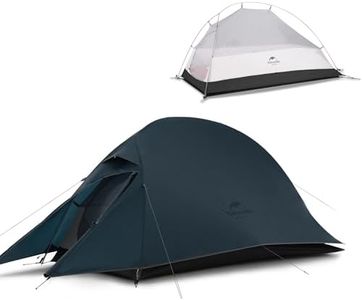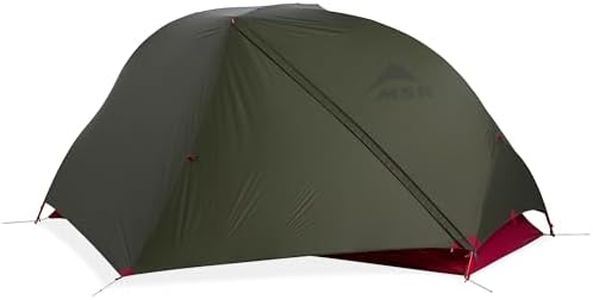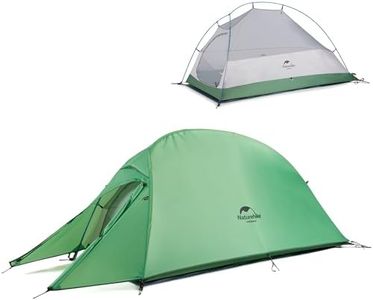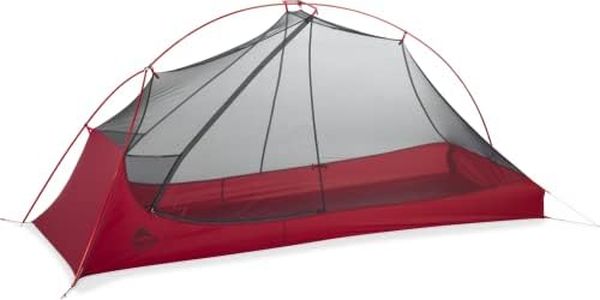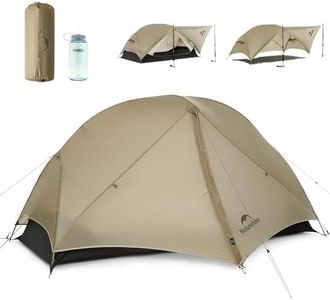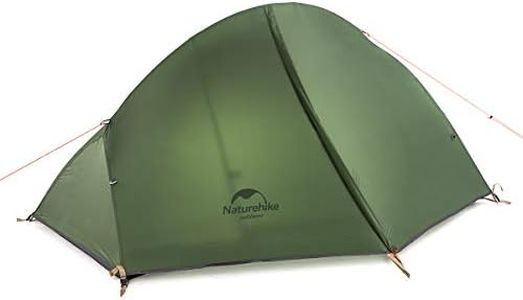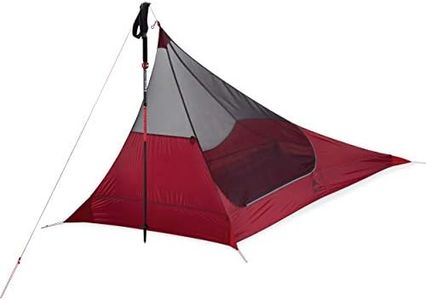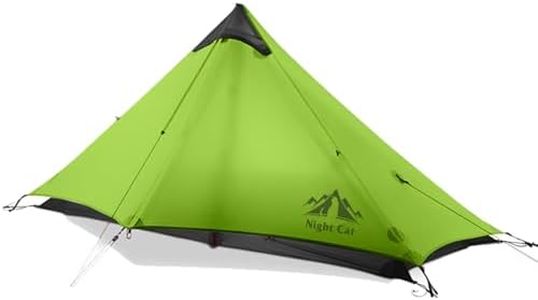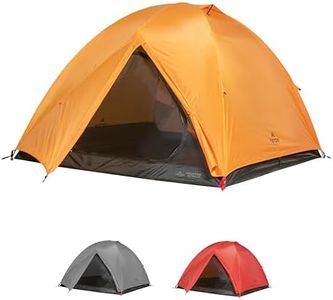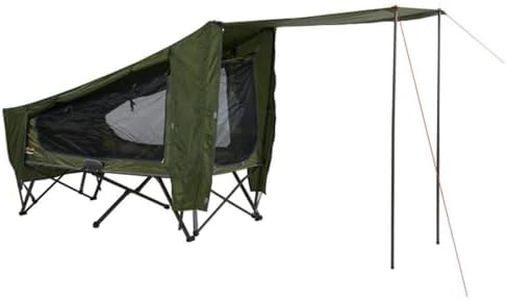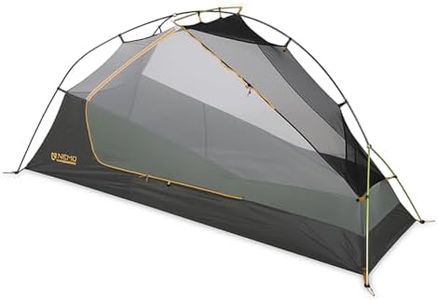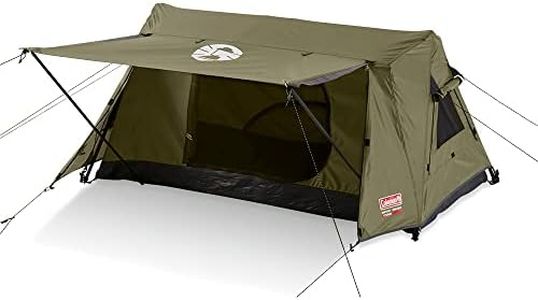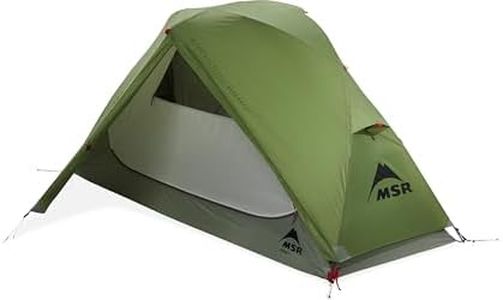We Use CookiesWe use cookies to enhance the security, performance,
functionality and for analytical and promotional activities. By continuing to browse this site you
are agreeing to our privacy policy
10 Best 1 Man Backpacking Tent
From leading brands and best sellers available on the web.Buying Guide for the Best 1 Man Backpacking Tent
Choosing a 1-man backpacking tent is all about finding the right balance between weight, durability, weather protection, and ease of use. Since you’ll be carrying this shelter on your back, it’s crucial to prioritize the features that match your style of hiking and the conditions you expect to encounter. Think carefully about where and when you’ll be trekking and how much comfort or simplicity you prefer, then compare the main features of each tent model to see which fits you best.WeightWeight refers to how heavy the tent is when packed, which is important because you have to carry it with all your other gear. Lighter tents are easier to carry over long distances, but they may sacrifice some durability or comfort. Very lightweight tents (under 2 pounds) are great for ultralight hikers but can feel cramped or use more delicate materials. Tents in the 2-4 pound range offer a bit more space and sturdiness and work for most backpackers. If you prefer comfort over minimalism or are not planning long days of hiking, a tent on the upper end of this range can still be suitable.
Pack SizePack size describes how small the tent is when it’s packed into its storage bag. Smaller packed tents are easier to fit into any backpack and make organizing your gear much simpler. Compact pack sizes are usually under 18 inches long and fit easily horizontally or vertically inside a pack. Larger packed tents can be awkward or need to be attached to the outside of your bag. If you use a smaller backpack or have lots of other gear, aim for a tent with the most compact pack size possible.
Weather Protection (Seasonality)Seasonality tells you what kind of weather the tent is made to handle. A 3-season tent is designed for spring, summer, and fall, providing good rain and wind protection with some ventilation for warmer months. 4-season tents are built for harsh winter conditions like snow and strong wind, often with heavier materials and fewer mesh panels. If you are mostly camping in fair weather or mild rain, a 3-season tent will be lighter and more breathable. For winter trips or harsher climates, you might need the extra security of a 4-season tent.
Interior Space (Floor Area and Height)Interior space includes the floor area and peak height of the tent, which affect how comfortable you’ll be inside, especially if you need to wait out bad weather. Smaller floor areas under 18 square feet are very snug and help keep weight down, while tents with 18-22 square feet offer a bit more room to move or store gear. Peak height, typically between 30 to 40 inches, determines whether you can sit up fully inside. Pick a size that matches your height and how much space you want to move around or keep your belongings inside.
Setup SimplicitySetup simplicity refers to how quickly and easily you can pitch the tent. Some tents have color-coded poles and clips, making them nearly effortless to set up—even in poor light. Others might be more complicated and take longer, especially in bad weather. If you’re new to backpacking or value time and convenience at the end of the day, choose a tent known for fast and straightforward setup.
VentilationVentilation means how well the tent lets air flow through, which reduces condensation and keeps the inside cooler on warm nights. Tents with ample mesh panels and vents are better for humid or warm conditions, as they allow air to circulate. Less mesh can be warmer in cold or windy areas. Think about your typical camping environment—if you hike in humid or rainy places, good ventilation will help keep things dry inside.
WaterproofingWaterproofing describes how well a tent keeps out rain and moisture, usually determined by the tent’s rainfly and floor materials. Higher-quality tents have a rainfly and floor made with waterproof coatings (often measured in millimeters). Light rain protection is fine for dry climates, but if you often camp in wet areas, look for reliable waterproof ratings and strong seam construction to stay dry during storms.
